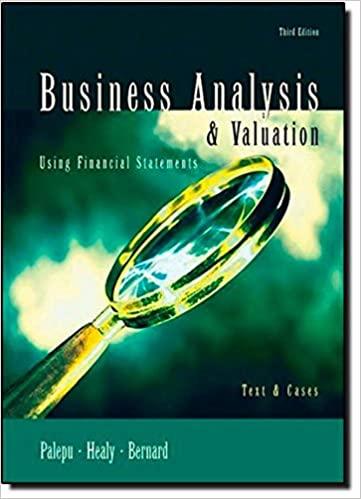Answered step by step
Verified Expert Solution
Question
1 Approved Answer
Working is also required Question ID: 419 This question is worth 10 marks in total. This is a written calculation question, and you should perform

Working is also required
Question ID: 419 This question is worth 10 marks in total. This is a written calculation question, and you should perform the necessary calculations/working on paper to later be scanned and uploaded. Start a new page for this question. For dollar amounts, give your answer to the nearest cent. For interest rates, give our answer as a percentage rounded to 2 decimal places. If any parts of the question use values from earlier parts, use the EXACT values from earlier parts. QUESTION START a) Between government bonds and corporate bonds, which are riskier? Why? (1 mark) Duncan recently completed ACST1001 and is hoping to apply what he has learned to start investing. The first investment he is considering is corporate bonds. Specifically, Duncan is interested in a $1,000 20-year semi-annual coupon bond with a coupon rate of 7%. The annual yield to maturity for such bonds is 5.5%. b) Calculate the fair price Duncan should pay for one such bond, given market conditions. (2 marks) c) Suppose that 6 months after he initially purchases this bond, immediately after receiving the coupon on that date, Duncan decides to sell his bond to his friend lan. lan pays a price that yields 6% p.a. effective. Calculate the price lan paid, ignoring any other costs (such as brokerage). (2 marks) d) Calculate the return on Duncan's 6 month investment, expressed as a percentage. (1 mark) Duncan is also considering investing in shares in a new company, Greene Daeye Ltd. Duncan can buy either ordinary shares or preference shares. e) Explain one difference between an ordinary share and a preference share. (1 mark) f) Duncan has decided to purchase an ordinary share. He has predicted that the first dividend will be paid will be exactly two years from today, and amount to $5. From there, Duncan believes the dividend will grow at 20% p.a. for 3 years. After that, the share will grow at 2.5% p.a. indefinitely. Based on the riskiness of this share, Duncan requires a return of 13% on his investment. Calculate the maximum price he is willing to pay for this share. (3 marks) QUESTION END You will need to scan this question and upload it to iLearn via the Final Exam submission link. Please disregard the box below (or enter anything you want into it), it doesn't have any effect on your grade. Answer: Question ID: 419 This question is worth 10 marks in total. This is a written calculation question, and you should perform the necessary calculations/working on paper to later be scanned and uploaded. Start a new page for this question. For dollar amounts, give your answer to the nearest cent. For interest rates, give our answer as a percentage rounded to 2 decimal places. If any parts of the question use values from earlier parts, use the EXACT values from earlier parts. QUESTION START a) Between government bonds and corporate bonds, which are riskier? Why? (1 mark) Duncan recently completed ACST1001 and is hoping to apply what he has learned to start investing. The first investment he is considering is corporate bonds. Specifically, Duncan is interested in a $1,000 20-year semi-annual coupon bond with a coupon rate of 7%. The annual yield to maturity for such bonds is 5.5%. b) Calculate the fair price Duncan should pay for one such bond, given market conditions. (2 marks) c) Suppose that 6 months after he initially purchases this bond, immediately after receiving the coupon on that date, Duncan decides to sell his bond to his friend lan. lan pays a price that yields 6% p.a. effective. Calculate the price lan paid, ignoring any other costs (such as brokerage). (2 marks) d) Calculate the return on Duncan's 6 month investment, expressed as a percentage. (1 mark) Duncan is also considering investing in shares in a new company, Greene Daeye Ltd. Duncan can buy either ordinary shares or preference shares. e) Explain one difference between an ordinary share and a preference share. (1 mark) f) Duncan has decided to purchase an ordinary share. He has predicted that the first dividend will be paid will be exactly two years from today, and amount to $5. From there, Duncan believes the dividend will grow at 20% p.a. for 3 years. After that, the share will grow at 2.5% p.a. indefinitely. Based on the riskiness of this share, Duncan requires a return of 13% on his investment. Calculate the maximum price he is willing to pay for this share. (3 marks) QUESTION END You will need to scan this question and upload it to iLearn via the Final Exam submission link. Please disregard the box below (or enter anything you want into it), it doesn't have any effect on your gradeStep by Step Solution
There are 3 Steps involved in it
Step: 1

Get Instant Access to Expert-Tailored Solutions
See step-by-step solutions with expert insights and AI powered tools for academic success
Step: 2

Step: 3

Ace Your Homework with AI
Get the answers you need in no time with our AI-driven, step-by-step assistance
Get Started


